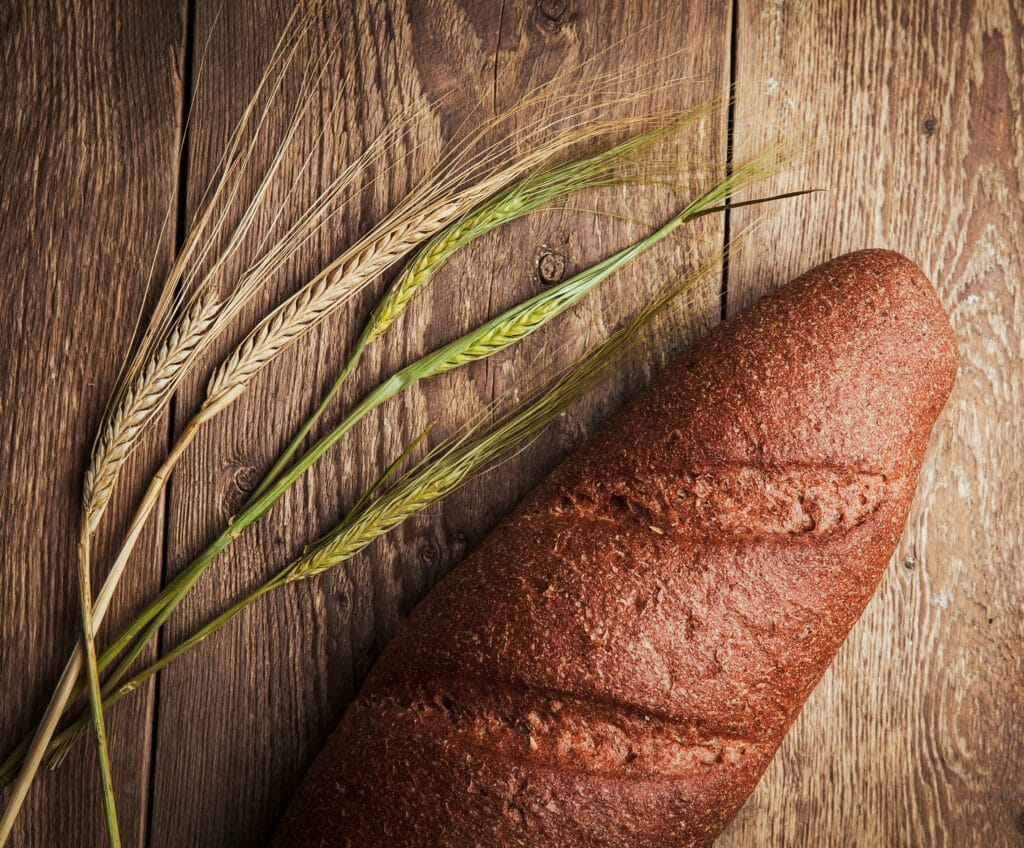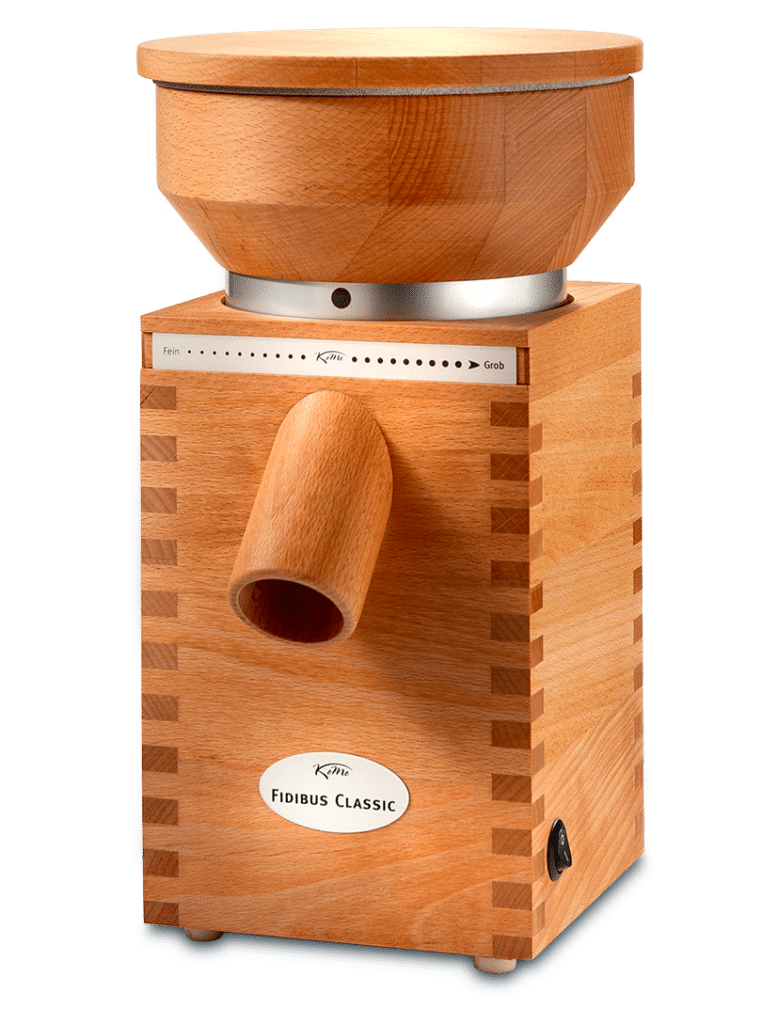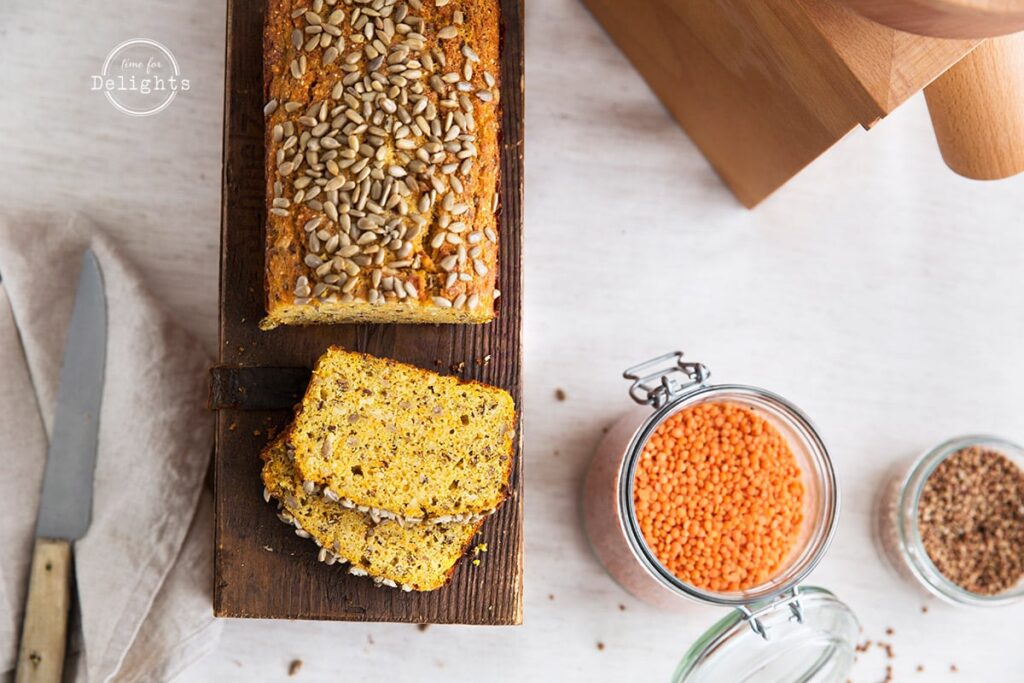Grind gluten free
Here you can learn more about gluten. What is gluten anyway, which grains contain gluten and how can I grind gluten free?
What is gluten?
Gluten is a storage protein with low nutritional value that occurs in numerous types of grain. This so-called gluten binds and stabilizes water, serves as a carrier for flavorings, gels and holds the flour together.
The following cereals contain gluten
Have a high percentage of gluten:
Spelt
Wheat
Kamut
Emmer
Einkorn
Durum wheat
Have a low gluten content:
Rye
Barley

PROCESSED PRODUCTS WITH GLUTEN
Many processed products can also contain gluten, such as:
Flour, breadcrumbs, semolina, couscous, bulgur, pearl barley, starch, muesli, cereal flakes, stabilizers, thickeners, flavor enhancers, emulsifiers, seitan, durum wheat pasta, malt products, dressings, spreads, ready meals.
Even gluten-free cereals and products containing spices or pseudo cereals should only be used if they are labeled gluten-free, as they may be contaminated with gluten.
Considered safe:
Quinoa, corn, millet, rice, soy, amaranth, buckwheat, flaxseed, nuts, legumes as well as dairy products, fruits, vegetables and meat or fish. Oats also do not contain gluten, but oat products should always be certified gluten-free because oats are often highly contaminated during cultivation and processing.
Consumers can be safest by milling or flaking the grains themselves and sourcing the raw materials from their trusted grain supplier.
Coeliac disease
Currently, about 1% of the world’s population suffers from celiac disease, an autoimmune disease that is still incurable. The trigger is the gluten protein, which is contained in grains such as wheat, rye, spelt and barley. Even the smallest amounts can trigger severe symptoms affecting the stomach and intestines. The only treatment option for celiac disease is a lifelong gluten-free diet.
Gluten-free grinding works easily and quickly with the grain mills from KoMo
With a high quality KoMo mill you can do any amount. Not only cereals, but also legumes or pseudo cereals can be ground such as:
- Legumes such as peas, beans, lentils, soybeans or chickpeas
- Pseudocereals such as quinoa, amaranth and buckwheat
- Hard cereals such as rice, corn, millet in many varieties

Celiac disease is not an intolerance per se, but an autoimmune reaction. The intestinal mucosa of those affected becomes inflamed as soon as it comes into contact with food containing gluten. As a result, the villi of the small intestine regress and nutrients can no longer be absorbed and utilized in sufficient quantities.
Over time, people with celiac disease therefore have to struggle with nutrient deficiencies and the effects of the inflammatory processes. If gluten is strictly avoided, the symptoms subside again. However, gluten-containing products must be avoided for the rest of the patient’s life. Approximately 1 in 200 people are affected by celiac disease, which should always be diagnosed by a doctor and not treated on your own.

Wheat allergy
In this case there is an allergy to the wheat protein. In this case, wheat, spelt and products made from it must be avoided. The wheat subspecies kamut, einkorn and bikorn must also be avoided. The symptoms occur not only after eating wheat, but also by inhaling wheat dust.
The symptoms of wheat allergy are very similar to those of celiac disease, which is why gluten intolerance should be ruled out by a doctor.
Wheat sensitivity
In this case, it is not an allergy but an autoimmune disease – if both celiac disease and wheat allergy are ruled out, then wheat products should be omitted for a certain period of time and then reintroduced into the diet in a controlled manner. By testing slowly, one can find out what amounts of wheat products can be tolerated.
Especially if you suffer from celiac disease,
own mill is perfect and brings decisive advantages:
Save money
More nutrients
Variety and flexibility
Which mill is the right one?
More powerful grain mills with 360 watts or 400 watts of motor power easily grind harder or larger grist such as corn and rice into the finest flour. These include the models:
If you need very large quantities of flour, then the 600 watt variant Fidibus XL or Fidibus XL plus is recommended.
By the way: Our grain mills can also be ground gluten-free on request.
What does it mean?
On request also without traces of gluten!
You can find more about grinding in here
Baking gluten free
In order to achieve good baking results with gluten-free flour, a few small things need to be taken into account, as the baking properties of gluten-free flour differ from flour with gluten. The gluten is responsible for making the bread nice and fluffy and not collapsing. With this flour, therefore, an extra binder must be added to achieve a similarly fluffy consistency. For a consistency similar to wheat flour, two gluten-free flours should be mixed:
Example of the composition of a gluten-free flour mixture:
2 parts gluten-free flour (650g), 1 part starch flour (350g), 1 binder (4-8 teaspoons).
Doughs without gluten require more liquid than conventional doughs. In the case of cakes, the liquid can also be increased by adding cottage cheese – this makes the baked goods particularly soft and moist. The baking color also differs for gluten-free pastries. As a rule, they do not become as dark as conventional pastries. Nevertheless, please do not leave them in the oven for too long – this will not make the breads browner, but only drier.
What you should bear in mind when baking with gluten free flours
- In most cases, these alternatives do not have the same baking properties as flours containing gluten, because the gluten ensures that the baked goods rise and hold together. But the alternatives without gluten often offer more nutrients such as proteins, healthy fatty acids, fiber, and minerals.
- You need special recipes for gluten-free baking, because wheat flour cannot simply be replaced 1:1 with alternatives. Look specifically for gluten-free recipes. You will often find a combination of different flours without gluten in such recipes, because it’s the mixture that makes the difference.
- You will usually find the use of binders in recipes that compensate for the missing gluten protein – for example, starch flours such as potato flour or guar gum.
- You will probably also notice a difference in the baking result. Often the result is drier but this does not detract from the taste of course.

But don’t let these „disadvantages“ scare you away. With time, you will surely get the hang of it and get delicious results. We have here, for example, a nice recipe to bake: Gluten free lentil buckwheat bread.











